Denmark’s rich cultural heritage is preserved in its historic sites, castles, Viking monuments, and UNESCO World Heritage locations. For expats, visiting these Denmark heritage sites provides a deeper connection to the country’s history and culture. These sites offer more than just sightseeing -they help you connect with Denmark’s past, providing context to the present.
- UNESCO World Heritage Sites in Denmark: Denmark hosts several UNESCO sites like Roskilde Cathedral and Kronborg Castle, which are key to understanding the country’s historical and cultural development.
- Major Heritage Sites and Their Significance: Sites such as Roskilde Cathedral, Kronborg Castle, and Viking museums offer insights into Denmark’s royal history, maritime power, and Viking heritage.
- Viking Heritage and Archaeological Sites: Places like Jelling Runestones, Lindholm Høje, and the Viking Ship Museum provide a deep understanding of Viking history, burial customs, and naval strategies.
- Castles and Architectural Wonders: Denmark’s castles, including Frederiksborg and Egeskov, serve as museums that showcase royal history, architecture, and cultural evolution.
- Conservation and Community Engagement: Expats can participate in heritage preservation through volunteering, donations, or supporting conservation projects, helping safeguard Denmark’s cultural legacy.
UNESCO World Heritage Sites in Denmark
From Viking age burial mounds to grand castles that once housed Denmark’s royal family, Denmark’s heritage sites capture the country’s evolution through centuries. In this guide, we’ll explore some of the key heritage locations that expats should not miss.
Denmark is home to several UNESCO World Heritage sites that are deeply intertwined with the country’s historical and cultural journey. These sites not only offer architectural beauty but also provide profound historical insights.
Roskilde Cathedral
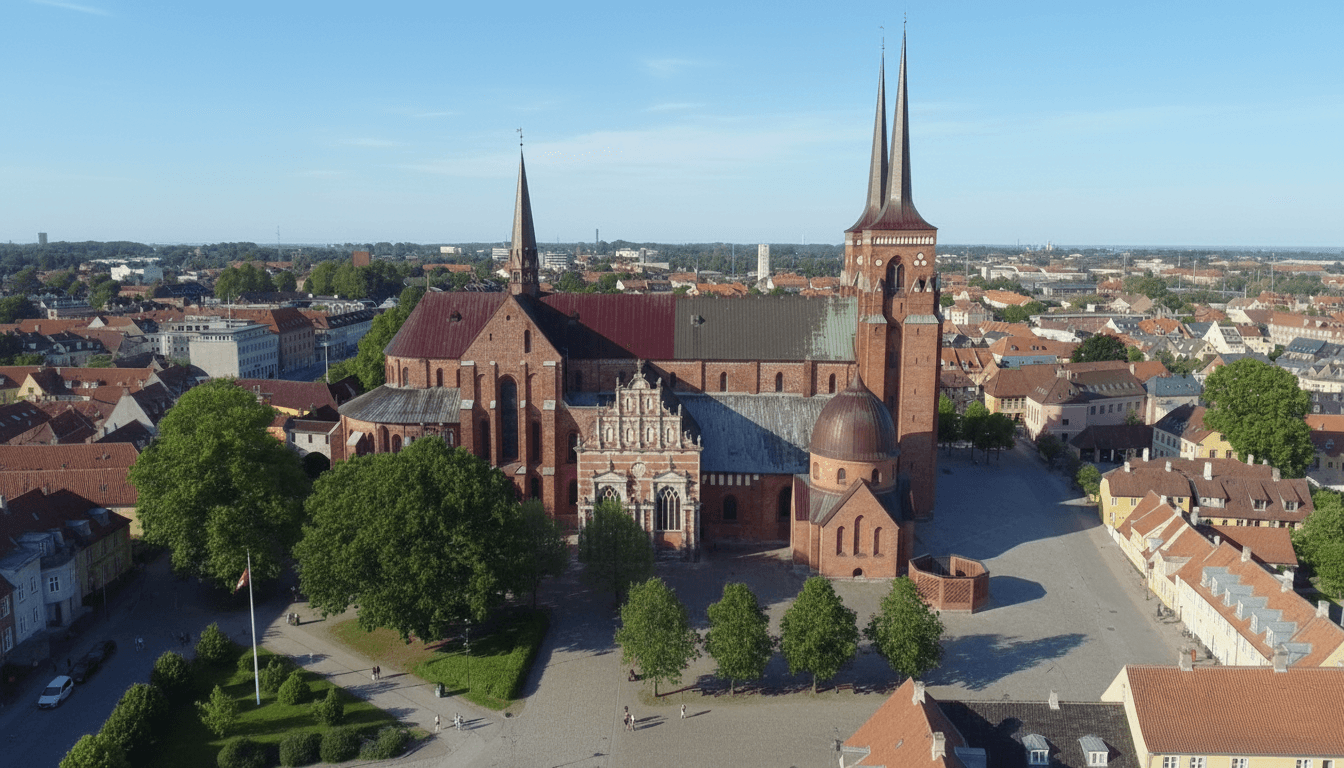
Roskilde Cathedral is one of Denmark’s most famous UNESCO sites. Built in the 12th and 13th centuries, it is a stunning example of Gothic architecture. The cathedral stands as more than just a religious building; it is the final resting place of nearly 40 Danish kings and queens, making it a key site for royal history lovers.
Inside, you can explore its intricately designed chapels, each dedicated to a different royal family member. Guided tours are also available, offering in-depth stories about Danish royalty and the construction of this majestic structure.
Kronborg Castle
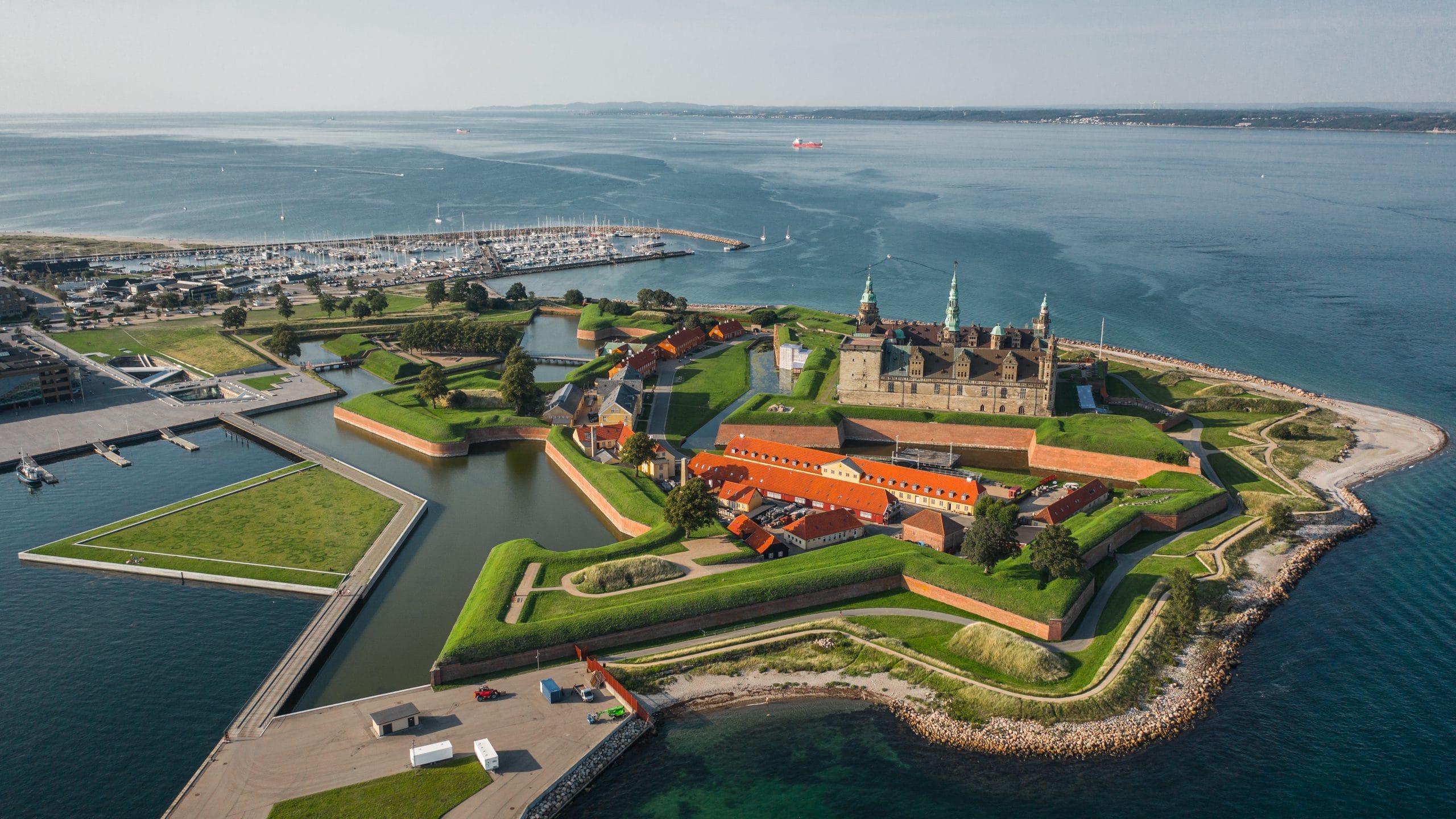
Kronborg Castle, known globally as the setting for Shakespeare’s Hamlet, is another UNESCO World Heritage site. It’s a Renaissance fortress located in Helsingør, guarding the Danish waters leading into the Baltic Sea. Built in the 15th century, Kronborg played a crucial role in Danish maritime power, collecting tolls from ships passing through the Øresund Strait.
Visiting Kronborg Castle is a journey through Renaissance architecture, royal history, and maritime defense. You can explore the royal apartments, the grand ballroom, and the military casemates beneath the castle where soldiers once lived. For expats, Kronborg offers not only a historical glimpse but also the opportunity to enjoy summer Shakespeare performances in the castle’s courtyard, immersing themselves in Danish culture.
Key features of Kronborg Castle:
- Stunning Renaissance architecture
- Royal chambers and the grand ballroom
- Casemates used for military purposes
- Seasonal Shakespeare performances
Viking Denmark Heritage Sites and Museums
Denmark’s Viking history is an important part of the country’s identity. Many sites and museums in Denmark preserve and showcase the lives of these seafaring warriors, giving expats a chance to understand the Viking influence on Danish culture.
Jelling Runestones
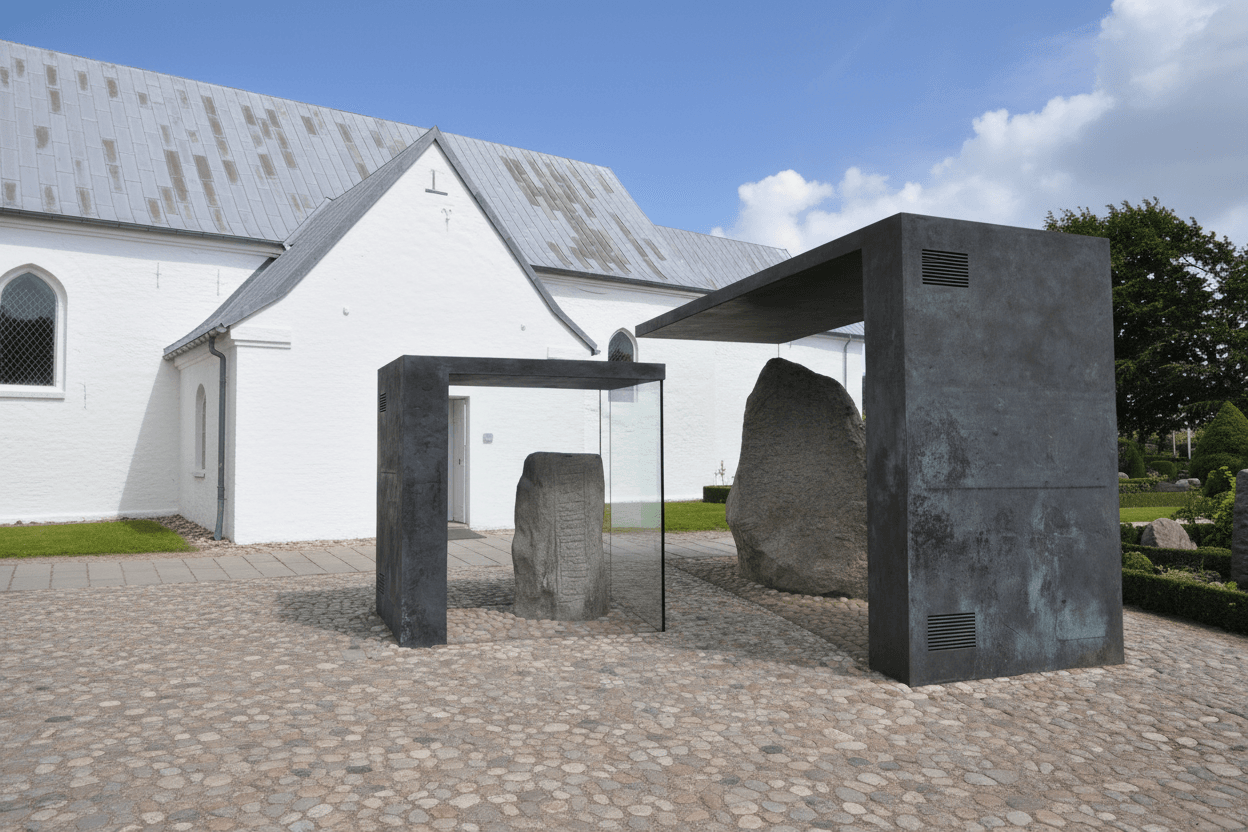
The Jelling Runestones, referred to as Denmark’s “birth certificate,” mark the country’s transition from paganism to Christianity. Erected by King Harald Bluetooth, these stones symbolize Denmark’s unification under one ruler and the acceptance of Christianity. The carvings on these stones represent early Danish writing and Viking-era artistry, making them a vital historical monument.
Expats visiting Jelling can explore not just the runestones, but also the nearby church and burial mounds, where Viking kings were laid to rest. The stones provide a unique insight into Denmark’s early history and its shift towards Christianity.
Viking Ship Museum, Roskilde
The Viking Ship Museum in Roskilde showcases five well-preserved Viking ships that were excavated from the nearby fjord. These ships were deliberately sunk to block enemy fleets from sailing into the harbor, giving modern-day visitors a rare look at Viking naval strategies and craftsmanship.
What to explore at the Viking Ship Museum:
- The Viking ships on display, representing various ship types
- Interactive exhibits on Viking shipbuilding and navigation
- Seasonal sailing trips aboard replicas of Viking ships
- Hands-on activities like traditional Viking craftsmanship
Denmark Heritage Sites: Majestic Structures and Royal History
Denmark’s castles are some of the most beautiful and historically rich in Europe, offering a glimpse into royal life, architectural evolution, and Denmark’s transition from medieval defense to modern statehood.
Frederiksborg Castle
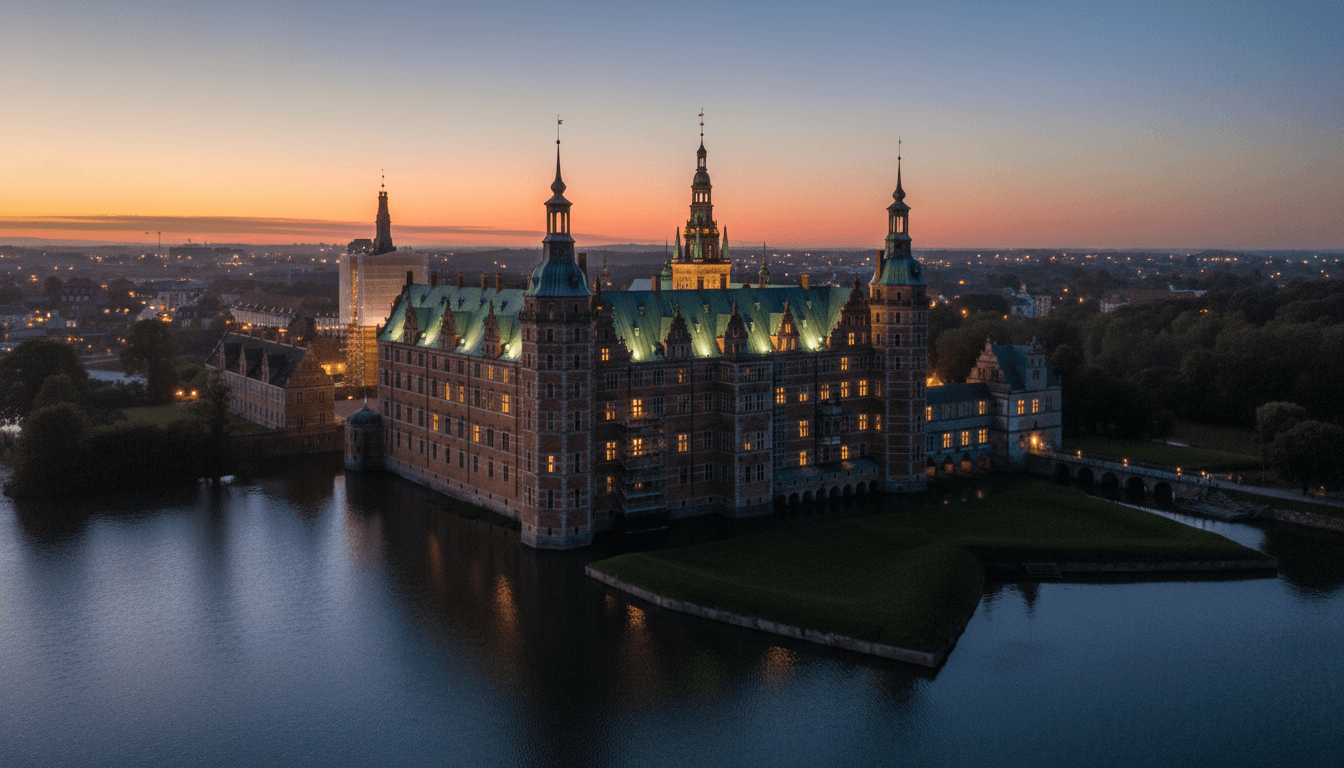
Frederiksborg Castle in Hillerød is Denmark’s largest Renaissance castle and was built by King Christian IV in the early 1600s. The castle now houses the Museum of National History, showcasing art and cultural history from Denmark’s royal past.
The grand baroque gardens are perfect for leisurely walks, and the castle’s interior offers a deep dive into Danish royal life, including portraits of the monarchy, furniture, and tapestries that tell the story of the nation’s history. For expats, Frederiksborg is an ideal location for appreciating both art and architecture.
Egeskov Castle
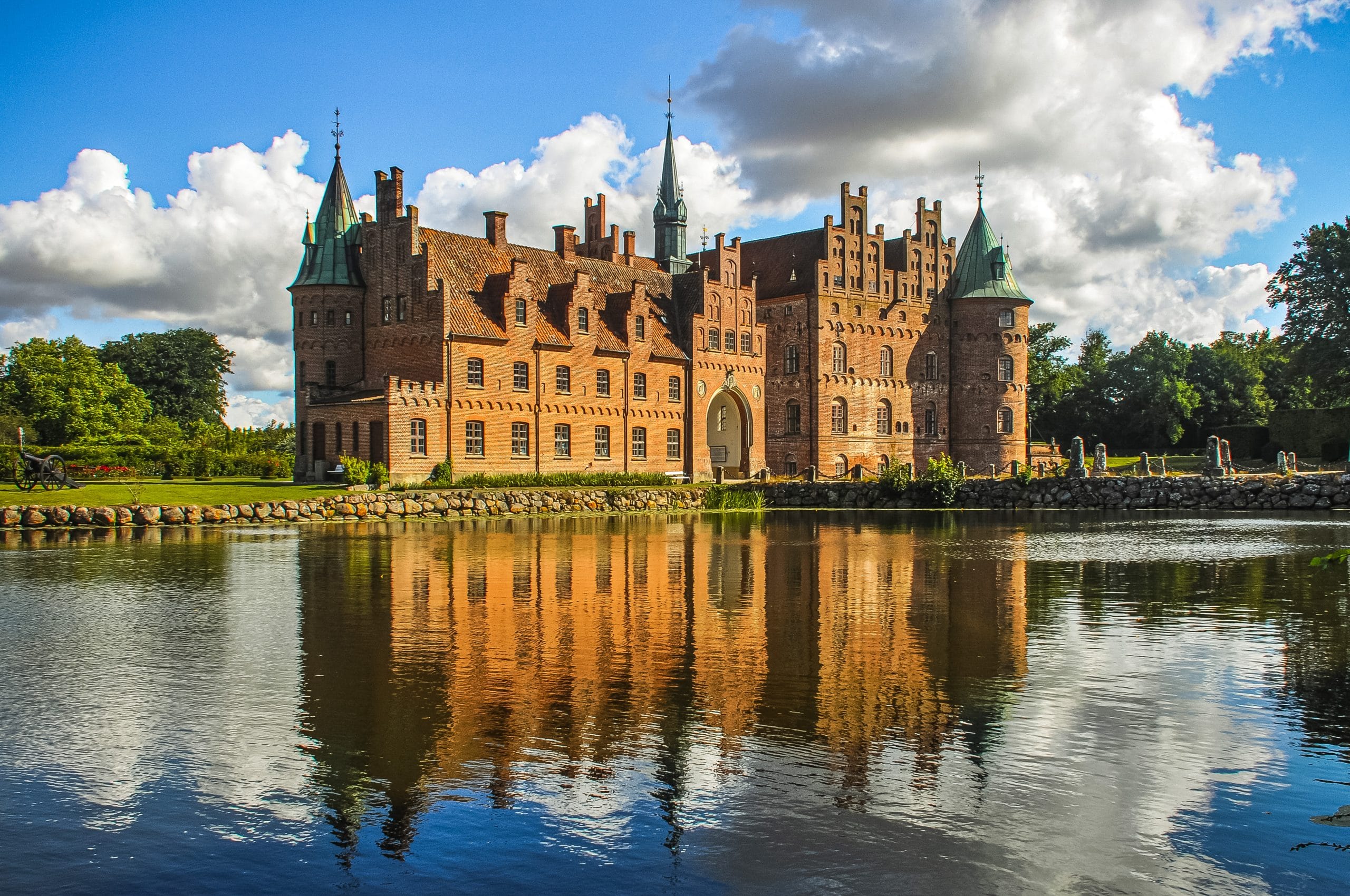
Egeskov Castle, located on the island of Funen, is one of the best-preserved Renaissance water castles in Europe. Surrounded by a moat and lush gardens, Egeskov is known not only for its beauty but also for its rich history, which spans over 450 years.
Inside, you can explore beautifully preserved rooms with original furnishings, weapon collections, and a museum that highlights classic cars and motorcycles. The surrounding gardens and parklands also offer treetop walks and activities for families.
Key experiences at Egeskov Castle:
- Tour the castle’s historic rooms and exhibits
- Walk through the stunning gardens and parklands
- Visit the museum featuring classic car and motorcycle collections
- Take part in family-friendly outdoor activities
Ancient Burial Mounds and Runestones: Echoes of Denmark’s Past
Denmark’s ancient burial mounds and runestones offer glimpses into the lives of the country’s early inhabitants and the transition from paganism to Christianity.
Lindholm Høje
Located near Aalborg, Lindholm Høje is one of Denmark’s most important Viking burial sites. The site contains stone circles marking Viking graves dating back to the Iron Age and Viking Age. It’s a fascinating location for those interested in early Danish burial customs and Viking history.
Visitors can also explore the nearby museum, which explains the history of the site and the everyday lives of the people buried there.
Why visit Lindholm Høje:
- Explore one of Denmark’s most significant Viking burial sites
- Learn about Viking life and death in the nearby museum
- Walk among stone circles marking ancient graves
Denmark’s Maritime Legacy
Denmark’s maritime heritage is deeply intertwined with its history as a nation of sailors and explorers. Several maritime museums and historic ships offer expats the chance to explore Denmark’s naval past.
Maritime Museum of Denmark, Helsingør
The Maritime Museum of Denmark, located in Helsingør, is built in a former dry dock and showcases Denmark’s rich maritime history. From Denmark’s role in global trade to naval battles, the museum provides a detailed look at the country’s relationship with the sea.
Expats can walk through interactive exhibits that tell the story of Denmark’s merchant fleet, naval strategies, and maritime innovations. The museum also focuses on the importance of Denmark’s shipping industry, which has been vital to the country’s economy for centuries.
Highlights of the Maritime Museum:
- Denmark’s naval history and role in global trade
- Interactive exhibits showcasing maritime innovations
- Ship models and personal stories of sailors
Churches and Cathedrals: Denmark Heritage Sites
Denmark’s churches and cathedrals are not just religious buildings; they are architectural marvels that have witnessed centuries of Danish history.
Denmark Heritage Sites: Roskilde Cathedral
A visit to Roskilde Cathedral allows expats to marvel at its Gothic architecture while understanding the historical significance of this UNESCO site. With its royal tombs and intricate design, the cathedral is a powerful reminder of Denmark’s Christian heritage and royal traditions.
Church of Our Saviour
The Church of Our Saviour in Copenhagen is renowned for its corkscrew-shaped spire, which offers panoramic views of the city. Expats can climb the winding stairs to the top for an unforgettable view of Copenhagen, while also appreciating the Baroque architecture that defines the church’s design.
Getting Involved in Conservation Efforts
Denmark takes the preservation of its heritage sites seriously, ensuring that future generations can continue to explore and appreciate the country’s rich history. As an expat, these are some of the way you can get involved in conservation efforts:
Volunteering at Denmark Heritage Sites
Many of Denmark’s heritage sites offer volunteer opportunities, allowing individuals to help maintain the sites, assist with events, and engage with the community. Volunteering offers expats a unique way to connect with Danish culture and meet others who share an interest in history and preservation.
Supporting Conservation Projects
Expats can also support heritage site conservation through donations, fundraising events, or participating in awareness campaigns. Many organizations dedicated to preserving Denmark’s heritage offer ways for the public to contribute to ongoing conservation efforts.
Conclusion
Denmark’s heritage sites offer expats a deeper understanding of the country’s history, culture, and identity. From the ancient Viking ships to grand castles and UNESCO World Heritage sites, these locations bring Denmark’s past to life. By exploring these sites and engaging with the stories they tell, expats can build a stronger connection to Denmark’s cultural fabric and enrich their experience of living in this remarkable country.
FAQs
What are some must-visit Denmark heritage sites for expats?
Some must-visit Denmark heritage sites for expats include Roskilde Cathedral, Kronborg Castle, Jelling Runestones, Frederiksborg Castle, and the Viking Ship Museum in Roskilde.
How can expats learn about Denmark’s Viking heritage?
Expats can visit heritage sites like Jelling Runestones, Lindholm Høje, and the Viking Ship Museum in Roskilde to explore Denmark’s Viking history. Viking heritage centers like Ribe Viking Center offer interactive experiences.
Are there guided tours available at Denmark heritage sites?
Yes, many heritage sites in Denmark, including Roskilde Cathedral, Kronborg Castle, and Egeskov Castle, offer guided tours in multiple languages, allowing expats to learn about the history and significance of these sites in depth.
What are Denmark’s UNESCO World Heritage Sites?
Denmark’s UNESCO World Heritage Sites include Roskilde Cathedral, Kronborg Castle, Jelling Runestones, Stevns Klint, the Par Force Hunting Landscape, and the Wadden Sea.
Can expats participate in conservation efforts at heritage sites?
Yes, expats can get involved in conservation efforts through volunteering at heritage sites, supporting fundraising events, and participating in preservation projects.
What role do Denmark’s castles play in its heritage?
Denmark’s castles, such as Frederiksborg Castle and Egeskov Castle, offer insights into the country’s royal history, architectural evolution, and cultural significance. These castles now serve as museums, event venues, and historical landmarks.
What are the best Viking heritage sites to visit in Denmark?
The best Viking heritage sites to visit include Jelling Runestones, Lindholm Høje, and the Viking Ship Museum in Roskilde. These sites preserve Viking-age artifacts, burial mounds, and ships.
How do I visit Denmark’s maritime museums?
Denmark’s maritime museums, such as the Maritime Museum of Denmark in Helsingør, are open to the public year-round. Visitors can explore interactive exhibits, historic ships, and maritime artifacts that highlight Denmark’s naval history.
What can I expect when visiting Denmark’s churches and cathedrals?
When visiting Denmark’s churches and cathedrals, expect to see stunning Gothic and Baroque architecture. Roskilde Cathedral is a UNESCO World Heritage site, while the Church of Our Saviour offers panoramic views of Copenhagen from its unique spire.
What is special about Denmark’s runestones and burial mounds?
Denmark’s runestones and burial mounds, such as those at Jelling and Lindholm Høje, provide a fascinating glimpse into the Viking age, offering insight into early Danish history, religion, and culture.
Are there family-friendly activities at Denmark heritage sites?
Yes, many heritage sites in Denmark, such as Egeskov Castle and Viking heritage centers, offer family-friendly activities, including interactive exhibits, outdoor games, and workshops focused on history and culture.
How can expats contribute to Denmark’s heritage preservation?
Expats can contribute to heritage preservation by volunteering at heritage sites, participating in local conservation programs, or supporting fundraising initiatives dedicated to maintaining Denmark’s cultural landmarks.
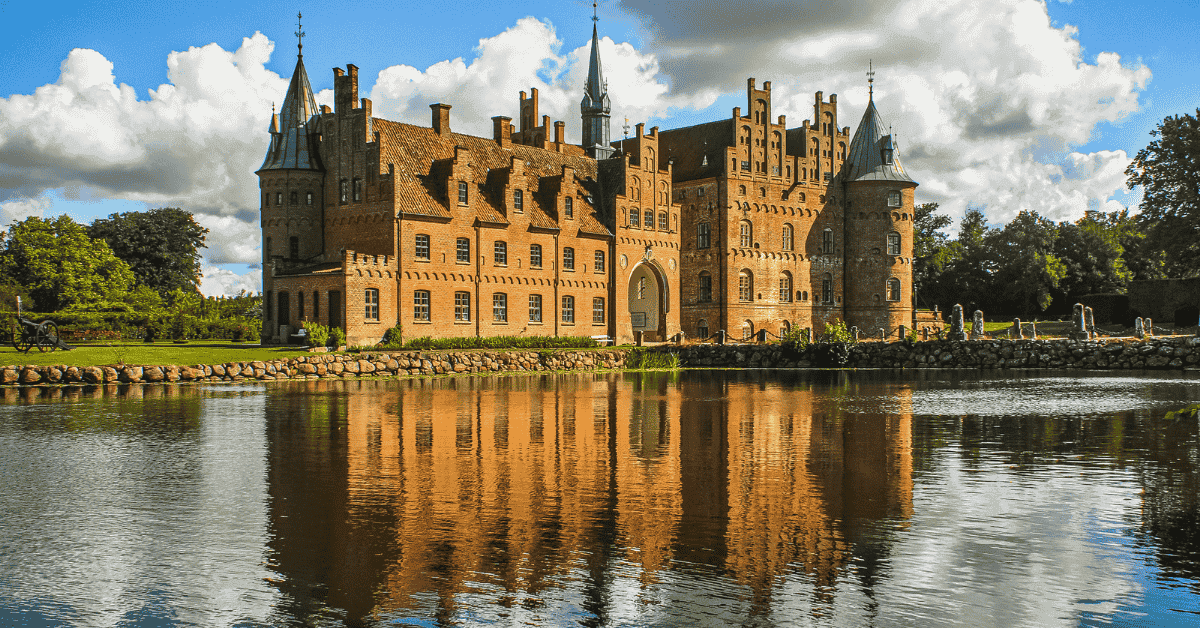







1 thought on “Unique Denmark Heritage Sites: An Exploration Guide for Expats”
Pingback: Unique Denmark Heritage Sites: An Exploration Guide for Expats - Forside